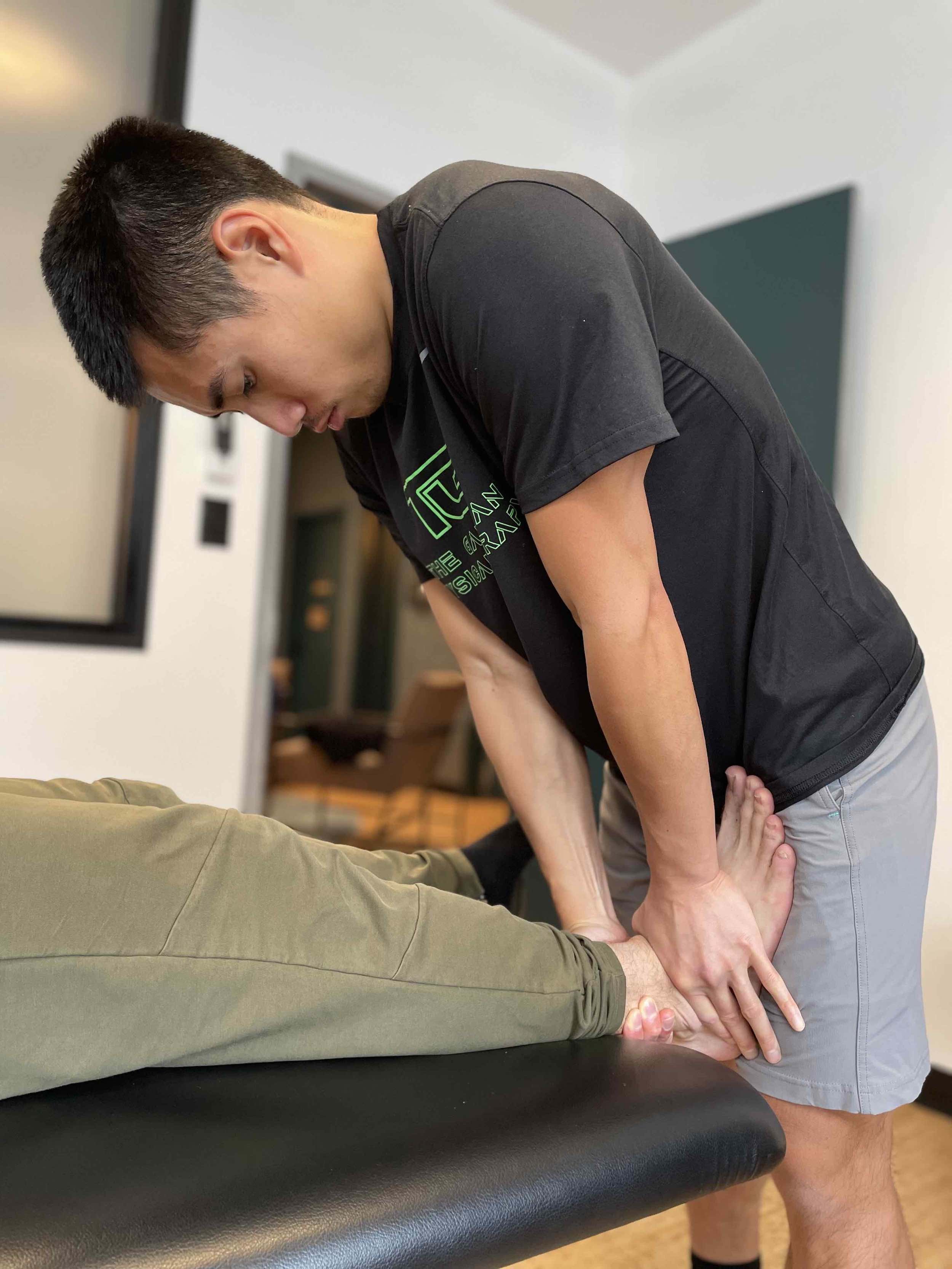
Physical Therapy for Foot and Ankle Pain Brooklyn | NYC
Physical Therapy Treatment for Foot & Ankle Injuries
At The Game Plan Physical Therapy, our orthopedic physical therapists understand the complexity of foot and ankle injuries and how they can keep you from performing at your best. We’ll help you identify the source, and get you back to the activities and sports you love.
Ankle & Foot Conditions We Specialize in Treating
-
This is an overuse injury that gradually gets worse over time. The tendon becomes less capable of tolerating impact and you may experience pain at the beginning and after you play your sport. It is most often seen in runners and jumping athletes. It can occur due to calf tightness, calf weakness, foot/ankle weakness and hip/core weakness. Treatment differs if we are dealing with tendinopathy versus tendinitis. We rule this in with palpation testing and location of symptoms.
-
The mechanism of injury for this is a sudden stretching to the calf/Achilles complex. We see it in basketball and football most often. The athlete says it feels like somebody kicked them in the back of the leg. We help rule this in through a Thompson Test. However, an MRI is necessary to better understand the location and degree of the tear.
-
This is typically an overuse of the plantar fascia in the sole of your foot. Pain is worse in the morning and when starting to walk after prolonged sitting. It’s commonly seen in runners who have foot and calf weakness, and who lack big toe and ankle joint mobility.
You can learn more about this condition from our Plantar Fasciitis blog.
-
This is an overuse condition of the tibialis posterior tendon on the medial (inside) part of your ankle. It is most often seen in runners and those with excessively flat feet. This can be treated conservatively with physical therapy, and we often recommend the use of foot orthotics as well.
-
This is a condition that involves irritation around the nerves between the bones of your feet (metatarsals). It’s most common between the 3rd and 4th metatarsals, and secondly most common between the 2nd and 3rd metatarsals. Individuals say that it feels like there’s a rock in their shoe. It is most commonly seen in runners who recently increased their volume or who have improperly fitting shoewear.
-
This is an injury that typically occurs when an athlete suddenly increases their training volume or training intensity. It can happen anywhere along the lower extremity, but we most commonly see it in the metatarsals, ankle bones (navicular), and shin bone (tibia). Other sites include the femoral neck and pubic ramus of the pelvis. Identifying these injuries in a timely manner is urgent, as continued training with this injury can cause more long term complications. Athletes who are overtraining and/or under eating are most at risk.
-
This injury occurs as a result of trauma such as a major fall or sports injury. The fibula is most commonly fractured, but we also see patients who have talus and/or tibial fractures. These injuries sometimes require surgery for stabilization. Other times, your orthopedist will recommend non weight bearing for a period of time, followed by progressive reloading, without surgery. Imaging such as x-ray, CT scan or MRI will be necessary to rule in or rule out a fracture.
-
Lateral ankle sprains are the most common sprains we see, and are often seen in basketball, volleyball and soccer players. This is not an injury that typically requires surgical intervention.
You can learn more about this condition from our Chronic Ankle Instability blog
-
This injury occurs in sports like football, soccer and basketball. It happens when the lower leg turns in on an ankle that is bent up (dorsiflexed). It is less common than a lateral ankle sprain, but can be more debilitating and tougher to come back from. This is not an injury that typically requires surgery.
-
This injury occurs from a sudden increase in speed when playing sports such as basketball, soccer, football or baseball. The muscle tear varies in severity based on grade (the higher the grade, the larger the tear). You will experience a sharp pain where the tear occurred, swelling / bruising in that region, and an inability to walk normally if there is a larger tear. This is most often treated conservatively with physical therapy depending on the grade of the tear.
-
This injury is seen in runners who recently increased their training volume or intensity (speed). Shoewear and running mechanics may also play a role. These runners will have at least 5 centimeters of continuous tenderness along the front / inside of the shin bone (tibia). This can be managed conservatively with physical therapy.








